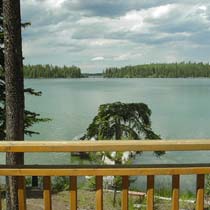Internet companies find they must adjust their ways to remain in favour with countries outside the U.S.
JANINE ZACHARIA
Sun

Google has created a version of its search engine that produces material that is sanctioned by the Chinese government. Companies must respect laws of countries in which they operate, a U.S. official says
When Thailand blocked Google Inc.’s YouTube website last year, the company dispatched deputy general counsel Nicole Wong to help restore access. In Bangkok, a sea of yellow shirts stunned her.
It was a Monday, when Thais wear yellow to honour King Bhumibol Adulyadej. Seeing their reverence, Wong says she grasped why officials reacted so strongly to a video blending a picture of Bhumibol with graffiti — an image that ran afoul of a law against insulting the 80-year-old monarch. Google agreed to block the clip in Thailand while leaving it available elsewhere, and YouTube returned to Thai computers.
Welcome to the culture clashes that Google and other U.S. Internet companies are navigating from Thailand to Turkey and China to Pakistan. The owner of the world’s most popular online search and video sites is learning to live with countries that “don’t share the same baseline” about the Web, Wong said in an interview at Google’s Mountain View, Calif., headquarters. These governments ban objectionable material because they “don’t know how else to control it.”
The Internet superpower’s corporate diplomacy is establishing far-reaching practices to keep online content, and advertising dollars, flowing across borders. Google’s ambassadors, lobbyists and lawyers are traveling the globe to gauge what governments will tolerate — and showing a readiness to bend America’s cherished belief in free expression.
“The notion that companies chartered in the United States do things in other countries they would never dream of doing in the United States is discomforting, obviously,” says John Palfrey, executive director of the Berkman Center for Internet & Society at Harvard University in Cambridge, Mass. “I think, though, this is the reality of doing business in a multinational environment, joined by a common technological network, which is the Internet.”
China, with an estimated 230 million people online, has been at the centre of the Web freedom controversy, especially since rival Yahoo! Inc. turned over emails and other information to the Chinese government in 2006, leading to the imprisonment of journalist Shi Tao and writer Wang Xiaoning.
“While technologically and financially you are giants, morally you are pygmies,” then-House Foreign Affairs Committee Chairman Tom Lantos told Yahoo executives during a 2007 hearing.
Yahoo, based in Sunnyvale, Calif., apologized, provided financial support to the prisoners’ families and asked the U.S. to discuss their plight with China.
In response to the Yahoo fiasco, Google decided not to offer Gmail, its popular e-mail service, in China to avoid government demands for messages. To prevent disruptions to its Chinese operations, the company maintains regular contact with officials through its office in Beijing.
Those ties are too cozy for some. Two years ago Google created a version of its search engine — Google.cn — that produces Chinese government-sanctioned material when people inside China seek anything on Tibet, Taiwan or Tiananmen Square.
“Even though Google and other companies now provide a disclaimer to notify users that censorship occurs, they still decide what to censor and whether they will even challenge the government’s actions,” Arvind Ganesan of New Yorkbased Human Rights Watch told a U.S. Senate panel on May 20.
Robert Boorstin, a former New York Times reporter who shapes communication strategy for Google from Washington, says the company was “given a choice to open a public library in the form of Google.cn” or be shut out of the country.
“We knew that users of the Google Chinese service would not be able to see a small, important part of the library,” he says. “But the alternative was no library cards for anyone.”
Customers in China and other countries are increasingly important for U.S. Internet companies: 48 per cent of Google’s revenue came from outside the U.S. last year, up from 39 per cent in 2005.
“Our goal is to maximize free expression,” Boorstin says. “But you face these situations where governments come to you and say, ‘You are violating our laws’.”
David Gross, U.S. government coordinator for international communications and information policy, endorses Google’s approach.
“We believe, of course, that companies need to respect domestic laws,” Gross says. “Having said that, finding technical solutions that don’t disadvantage those who live outside those countries is very important.”
Some say Google is in a unique position to take a tougher line in its Web diplomacy. “Google may be the first entity humankind has ever known with the global economic power and social influence to take the ethical high road and to treat free and open expression like a moral absolute,” says Jonathan Askin, a Brooklyn Law School professor and lawyer for Internet clients.
“If Google doesn’t have the wherewithal to exert its influence for the good of humanity, I don’t know who will have the courage going forward,” he says.







